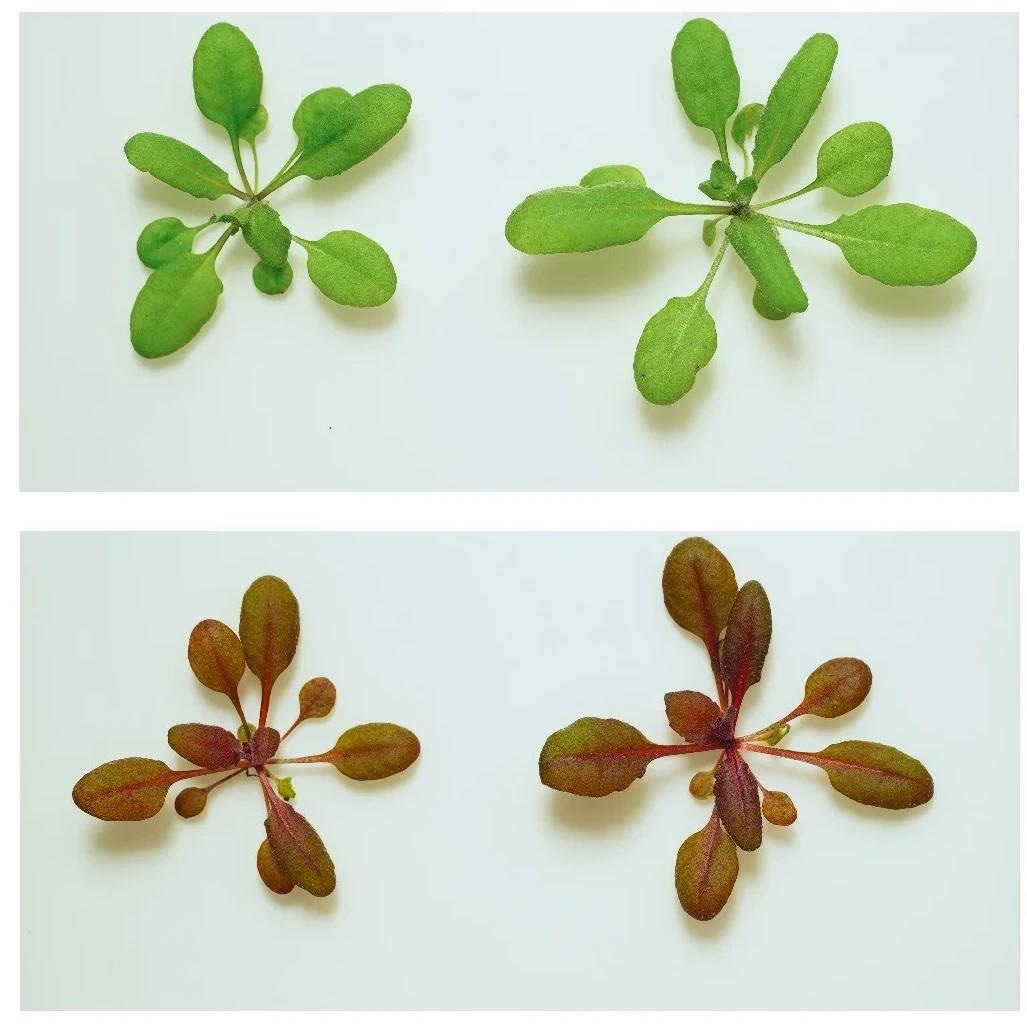Reviewed by Danielle Ellis, B.Sc.Oct 24 2023
Imagine if houseplants could alert one to unsafe water conditions. Scientists are making strides toward this innovative idea by successfully modifying a plant to change its color to beet red when it detects the presence of a prohibited and harmful pesticide.
 Laboratory plants, normally green, turn red in the presence of a toxic pesticide. Image Credit: Sean Cutler/University of California-Riverside.
Laboratory plants, normally green, turn red in the presence of a toxic pesticide. Image Credit: Sean Cutler/University of California-Riverside.
To accomplish this, researchers from UC Riverside had to tackle a challenging engineering conundrum: finding a way to empower a plant to detect and respond to a chemical in its surroundings without compromising its regular functioning in every other aspect.
“The biggest piece here is we’ve created an environmental sensor without modifying the plant’s native metabolism. Previously, the biosensor component would have messed up the plant’s ability to grow toward light or stop using water when stressed. This won’t,” notes Ian Wheeldon, Associate Professor of Chemical and Environmental Engineering at UCR.
The chemistry underlying this breakthrough has been published in the journal Nature Chemical Biology. The engineering process kicks off with the involvement of a protein known as abscisic acid, abbreviated as ABA, which assists plants in adapting to challenging environmental alterations.
When a drought occurs, causing the soil to dry up, plants start generating ABA. Furthermore, there are specific proteins, referred to as receptors, that aid the plant in recognizing and reacting to the presence of ABA. Consequently, this prompts the plant to close the openings in its leaves and stems, reducing water evaporation and thereby decreasing the likelihood of wilting.
The research team showcased the ability to instruct ABA receptor proteins to interact with chemicals beyond ABA. Now, the team has successfully exhibited that once these receptors attach to this alternative chemical, the plant undergoes a transformation, taking on a vibrant beet-red hue.
For this demonstration, the team employed azinphos-ethyl, a pesticide that has been prohibited in numerous regions due to its harmful effects on human health.
People we work with are trying to sense information about chemicals in the environment from a distance. If you had a field of these and they turned red, that would be pretty obvious, visually.”
Sean Cutler, Professor, Plant Cell Biology, University of California-Riverside
Within the same experiment, the research team also illustrated their capability to convert another living organism into a sensor: yeast. They managed to elicit a simultaneous response from yeast when exposed to two distinct chemicals. Regrettably, achieving this simultaneous response in plants has not yet become feasible.
It would be great if we could eventually design one plant to sense 100 banned pesticides, a one-stop shop. The more you can stack, the better, especially for applications involving environmental health or defense. But there are limits to what we can engineer for these new sensing capacities at this time.”
Sean Cutler, Professor, Plant Cell Biology, University of California-Riverside
These plants are not being cultivated for commercial purposes. Obtaining the necessary regulatory approvals for such a venture would be a lengthy process spanning many years.
Additionally, this is a novel technology with a set of challenges that must be resolved before its practical implementation in agricultural fields or any real-world applications. However, this discovery does unveil exciting possibilities.
This paper demonstrated a visual response to one chemical in plants. We’re trying to be able to sense any chemical in an environment. Other pesticides but also drugs like birth control pills or Prozac in the water supply, things people are worried about being exposed to. These are applications within reach now.”
Sean Cutler, Professor, Plant Cell Biology, University of California-Riverside
Source:
Journal reference:
Park, S.-Y., et al. (2023) An orthogonalized PYR1-based CID module with reprogrammable ligand-binding specificity. Nature Chemical Biology. doi.org/10.1038/s41589-023-01447-7